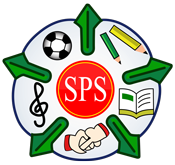Intent, Implementation and Impact
Subject Key Objective Progression & Development by Year Groups
The following is a guide to help you understand your child’s progression through school.
All lessons are differentiated. This means teachers plan activities that enable the objective to be learned by all children including those who will find the objective challenging, those children who with hard work will secure good progress and those children who can tackle extra stretch and challenge in this subject.
Music – Improvising – Primary Curriculum
Improvising – Foundation stage:
Understand how to investigate producing and organising sound using our own rules.
Improvising – Year 1:
Understand how different instruments sound when we make up musical passages that they play together.
Improvising – Year 2:
Understand the effect of combining instruments and use rules to make up our own music.
Improvising – Year 3:
Understand how to use structured note and simple note lengths whilst improvising.
Improvising – Year 4:
Understand how to use structured notes, and note lengths to semi-quavers, whilst improvising.
Improvising – Year 5:
Understand the basic formula of an improvisation and change notes and the right time
Improvising – Year 6:
Understand the formula of an improvisation, change notes at the right time whilst playing with attention to instrumental timbres, techniques and structural texture.
Improvising – Mastery:
Understand the formula of an improvisation. Change notes at the right time in accordance with the chord changes. Play with equal attention to the instrumental timbre, technique and structural texture.
Intent, Implementation and Impact
MUSIC – Improvising

EYFS: “They represent their own ideas, thoughts and feelings through music.”
KS1: “Experiment with, select and combine sounds using the inter-related dimensions of music.”
KS2: “Improvise music for a range of purposes using the inter-related dimensions of music.”
EYFS:
Beat (T2)
Rhythm (T2)
Freedom (T2)
KS1:
Scale (T2)
Creativity(T2)
Combine (T2)
KS2:
Melody (T2)
Pentatonic (T3)
Phrasing (T3)
Children may demonstrate an understanding of how to improvise music using the inter-related dimensions of music that they have learned through Singing,
Listening and Composing.
Children will increasingly develop the musical skills to create increasingly advanced improvisations that show use a greater variety of rules and that show their increasing understanding of the inter-related dimensions of music.
ildren may understand how to communicate their musical intentions by improvising using scales, form and structure.
Through the understanding of music, pupils may develop a greater understanding and appreciation of British values and culture helping them to develop a greater appreciation and understanding of the world around them.
What will be made, produced, performed, or published?
Children will demonstrate their understanding of music improvisation by recoding the performance of them or performing in school concerts and assemblies.
Some children may learn to improvise using scales, form and structure. Improvisations may be used to showcase the development of musical skill throughout the school through Portfolio Work recorded on the school website.
What knowledge will the children have embedded?
Children will be able to improvise music based on increasingly complex criteria. Children will develop a detailed knowledge of the inter-related musical language that relates to improvisation for their age group.
Some children will also be able to improvise over chord changes playing with a good sound, technique and awareness of the structure of their improvisation (e.g. 12 bar blues).
These children will be able to express musical ideas spontaneously and understand that improvisation is to music what speaking is to language.
What retention may be demonstrated?
Here are some example questions that may be used to assess children’s understanding.
EYFS: Can you show me what a rhythm is? Can you move to the beat of the music?
KS1: Can you combine the notes of a scale with rhythm? Can you create different orders of notes and rhythms?
KS2: Can you improvise using the notes in a pentatonic scale and create an interesting melody? Does the phrasing of your improvisation help the melody to sound good to the listener?

This collection of short films and resources will help you understand your child’s progression through school.
The curriculum film resource has been broken down by subject area initially and then by topic area.


